Instruction
Altering tee height influences trajectory
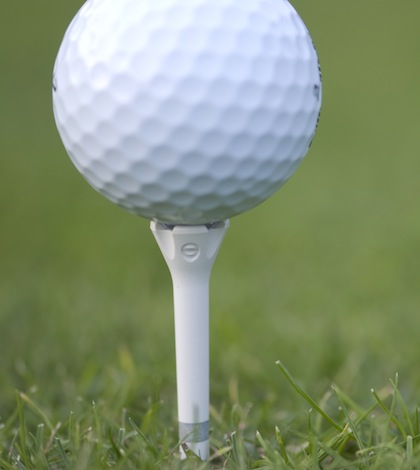
Just like everyone else, golfers can make things very complicated when the answers to some questions are actually quite simple.
While I am not discounting the introspective nature of golfers or even calling it a bad thing, I do want them to examine the simple solutions in golf before they try to make tougher changes.
One of the most common issues people have with their drivers is hitting the ball too high or too low. Now, I’m the first person to tell you to make sure your driver “works” for you by having it fit by a custom fitter. But before you make 10 different shaft and/or swing changes, take a second and alter your tee height and I bet you will make a substantial impact in your ball’s flight and overall trajectory.
In the examples below, I have used the Trackman to show you two factors:
- Overall Height: this is the highest apex of the ball in flight.
- Dynamic Loft: the actual loft that the ball is hit with during impact.
These two factors will show us how the three different tee heights I used influenced the overall trajectory of the ball in flight, as well as the actual loft the driver had when impacting the golf ball. Please remember we are only going to alter the tee height in order to change trajectory — everything else will remain constant.
1. Normal tee height
Using my “normal” tee height, where half of the golf ball was above the crown of my driver, I hit my driver 79.4 feet high with a dynamic loft of 16.1.
2. Low tee height
By teeing the ball the lowest I could tee it, where the top of the ball was even with the top of my driver, I hit the ball only 57.5 feet high with a dynamic loft of 12.3.
3. High tee height
By teeing the ball the highest I could tee it, where three-quarters of the ball was above the top of my driver, I hit the ball 114.2 feet high with a dynamic loft of 19.5.
So what does this all mean? Basically if you experiment with your tee height you can expect to see an altered dynamic loft of your driver, as well as a different trajectory of the ball in flight.
These changes are great for windy days. Tee it lower into the wind and higher downwind for optimal results. It is also a great idea to tee the ball lower if you want to hit the ball more accurately. Be careful, however, because sometimes you can hit the ball lower and it can “run” into trouble!
Obviously, with overseeded golf courses and wet golf courses, you should tee the ball higher in order to carry the ball farther because you won’t get the roll you need based on the conditions of the course.
Enjoy the process and experiment — you just might find a tee height that works for your game!
- LIKE11
- LEGIT1
- WOW0
- LOL1
- IDHT1
- FLOP0
- OB0
- SHANK0
Instruction
The Wedge Guy: The easiest-to-learn golf basic

My golf learning began with this simple fact – if you don’t have a fundamentally sound hold on the golf club, it is practically impossible for your body to execute a fundamentally sound golf swing. I’m still a big believer that the golf swing is much easier to execute if you begin with the proper hold on the club.
As you might imagine, I come into contact with hundreds of golfers of all skill levels. And it is very rare to see a good player with a bad hold on the golf club. There are some exceptions, for sure, but they are very few and very far between, and they typically have beat so many balls with their poor grip that they’ve found a way to work around it.
The reality of biophysics is that the body moves only in certain ways – and the particulars of the way you hold the golf club can totally prevent a sound swing motion that allows the club to release properly through the impact zone. The wonderful thing is that anyone can learn how to put a fundamentally sound hold on the golf club, and you can practice it anywhere your hands are not otherwise engaged, like watching TV or just sitting and relaxing.
Whether you prefer an overlap, interlock or full-finger (not baseball!) grip on the club, the same fundamentals apply. Here are the major grip faults I see most often, in the order of the frequency:
Mis-aligned hands
By this I mean that the palms of the two hands are not parallel to each other. Too many golfers have a weak left hand and strong right, or vice versa. The easiest way to learn how to hold the club with your palms aligned properly is to grip a plain wooden ruler or yardstick. It forces the hands to align properly and shows you how that feels. If you grip and re-grip a yardstick several times, then grip a club, you’ll see that the learning curve is almost immediate.
The position of the grip in the upper/left hand
I also observe many golfers who have the butt of the grip too far into the heel pad of the upper hand (the left hand for right-handed players). It’s amazing how much easier it is to release the club through the ball if even 1/4-1/2″ of the butt is beyond the left heel pad. Try this yourself to see what I mean. Swing the club freely with just your left hand and notice the difference in its release from when you hold it at the end of the grip, versus gripping down even a half inch.
To help you really understand how this works, go to the range and hit shots with your five-iron gripped down a full inch to make the club the same length as your seven-iron. You will probably see an amazing shot shape difference, and likely not see as much distance loss as you would expect.
Too much lower (right) hand on the club
It seems like almost all golfers of 8-10 handicap or higher have the club too far into the palm of the lower hand, because that feels “good” if you are trying to control the path of the clubhead to the ball. But the golf swing is not an effort to hit at the ball – it is a swing of the club. The proper hold on the club has the grip underneath the pad at the base of the fingers. This will likely feel “weak” to you — like you cannot control the club like that. EXACTLY. You should not be trying to control the club with your lower/master hand.
Gripping too tightly
Nearly all golfers hold the club too tightly, which tenses up the forearms and prevents a proper release of the club through impact. In order for the club to move back and through properly, you must feel that the club is controlled by the last three fingers of the upper hand, and the middle two fingers of the lower hand. If you engage your thumbs and forefingers in “holding” the club, the result will almost always be a grip that is too tight. Try this for yourself. Hold the club in your upper hand only, and squeeze firmly with just the last three fingers, with the forefinger and thumb off the club entirely. You have good control, but your forearms are not tense. Then begin to squeeze down with your thumb and forefinger and observe the tensing of the entire forearm. This is the way we are made, so the key to preventing tenseness in the arms is to hold the club very lightly with the “pinchers” — the thumbs and forefingers.
So, those are what I believe are the four fundamentals of a good grip. Anyone can learn them in their home or office very quickly. There is no easier way to improve your ball striking consistency and add distance than giving more attention to the way you hold the golf club.
More from the Wedge Guy
- The Wedge Guy: Golf mastery begins with your wedge game
- The Wedge Guy: Why golf is 20 times harder than brain surgery
- The Wedge Guy: Musings on the golf ball rollback
- LIKE83
- LEGIT13
- WOW5
- LOL1
- IDHT0
- FLOP4
- OB1
- SHANK8
Instruction
Clement: Stop ripping off your swing with this drill!

Not the dreaded headcover under the armpit drill! As if your body is defective and can’t function by itself! Have you seen how incredible the human machine is with all the incredible feats of agility all kinds of athletes are accomplishing? You think your body is so defective (the good Lord is laughing his head off at you) that it needs a headcover tucked under the armpit so you can swing like T-Rex?
- LIKE0
- LEGIT2
- WOW2
- LOL0
- IDHT0
- FLOP0
- OB0
- SHANK2
Instruction
How a towel can fix your golf swing

This is a classic drill that has been used for decades. However, the world of marketed training aids has grown so much during that time that this simple practice has been virtually forgotten. Because why teach people how to play golf using everyday items when you can create and sell a product that reinforces the same thing? Nevertheless, I am here to give you helpful advice without running to the nearest Edwin Watts or adding something to your Amazon cart.
For the “scoring clubs,” having a solid connection between the arms and body during the swing, especially through impact, is paramount to creating long-lasting consistency. And keeping that connection throughout the swing helps rotate the shoulders more to generate more power to help you hit it farther. So, how does this drill work, and what will your game benefit from it? Well, let’s get into it.
Setup
You can use this for basic chip shots up to complete swings. I use this with every club in my bag, up to a 9 or 8-iron. It’s natural to create incrementally more separation between the arms and body as you progress up the set. So doing this with a high iron or a wood is not recommended.
While you set up to hit a ball, simply tuck the towel underneath both armpits. The length of the towel will determine how tight it will be across your chest but don’t make it so loose that it gets in the way of your vision. After both sides are tucked, make some focused swings, keeping both arms firmly connected to the body during the backswing and follow through. (Note: It’s normal to lose connection on your lead arm during your finishing pose.) When you’re ready, put a ball in the way of those swings and get to work.

Get a Better Shoulder Turn
Many of us struggle to have proper shoulder rotation in our golf swing, especially during long layoffs. Making a swing that is all arms and no shoulders is a surefire way to have less control with wedges and less distance with full swings. Notice how I can get in a similar-looking position in both 60° wedge photos. However, one is weak and uncontrollable, while the other is strong and connected. One allows me to use my larger muscles to create my swing, and one doesn’t. The follow-through is another critical point where having a good connection, as well as solid shoulder rotation, is a must. This drill is great for those who tend to have a “chicken wing” form in their lead arm, which happens when it becomes separated from the body through impact.
In full swings, getting your shoulders to rotate in your golf swing is a great way to reinforce proper weight distribution. If your swing is all arms, it’s much harder to get your weight to naturally shift to the inside part of your trail foot in the backswing. Sure, you could make the mistake of “sliding” to get weight on your back foot, but that doesn’t fix the issue. You must turn into your trial leg to generate power. Additionally, look at the difference in separation between my hands and my head in the 8-iron examples. The green picture has more separation and has my hands lower. This will help me lessen my angle of attack and make it easier to hit the inside part of the golf ball, rather than the over-the-top move that the other picture produces.


Stay Better Connected in the Backswing
When you don’t keep everything in your upper body working as one, getting to a good spot at the top of your swing is very hard to do. It would take impeccable timing along with great hand-eye coordination to hit quality shots with any sort of regularity if the arms are working separately from the body.
Notice in the red pictures of both my 60-degree wedge and 8-iron how high my hands are and the fact you can clearly see my shoulder through the gap in my arms. That has happened because the right arm, just above my elbow, has become totally disconnected from my body. That separation causes me to lift my hands as well as lose some of the extension in my left arm. This has been corrected in the green pictures by using this drill to reinforce that connection. It will also make you focus on keeping the lead arm close to your body as well. Because the moment either one loses that relationship, the towel falls.


Conclusion
I have been diligent this year in finding a few drills that target some of the issues that plague my golf game; either by simply forgetting fundamental things or by coming to terms with the faults that have bitten me my whole career. I have found that having a few drills to fall back on to reinforce certain feelings helps me find my game a little easier, and the “towel drill” is most definitely one of them.
- LIKE12
- LEGIT2
- WOW2
- LOL0
- IDHT0
- FLOP2
- OB0
- SHANK8
-

 19th Hole2 weeks ago
19th Hole2 weeks agoJohn Daly stuns fans into silence with brutal opening tee shot on PGA Tour Champions
-

 19th Hole1 week ago
19th Hole1 week agoThings got heated at the Houston Open between Tony Finau and Alejandro Tosti. Here’s why
-

 19th Hole5 days ago
19th Hole5 days agoReport: Tiger Woods has ‘eliminated sex’ in preparation for the 2024 Masters
-

 19th Hole3 weeks ago
19th Hole3 weeks ago2-time major champ announces shock retirement from the sport at age of 33
-

 19th Hole3 weeks ago
19th Hole3 weeks agoEdoardo Molinari reveals the latest PGA Tour golfer to turn down ‘good offer’ from LIV Golf
-

 19th Hole2 weeks ago
19th Hole2 weeks agoCharlie Woods finds it tough going on American Junior Golf Association debut
-

 19th Hole7 days ago
19th Hole7 days agoAddiction, spinal fusion, and scam artists – Everything Anthony Kim revealed in candid interview with David Feherty
-

 19th Hole3 weeks ago
19th Hole3 weeks agoJon Rahm dealt fresh blow to hopes of qualifying for 2025 Ryder Cup

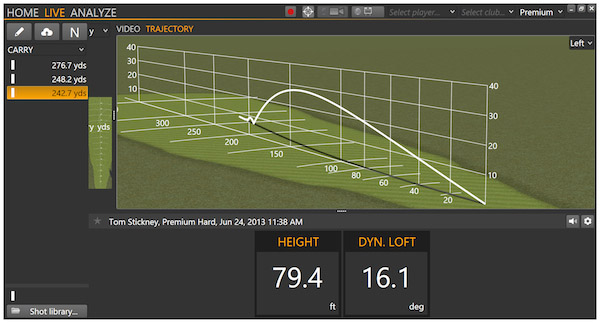
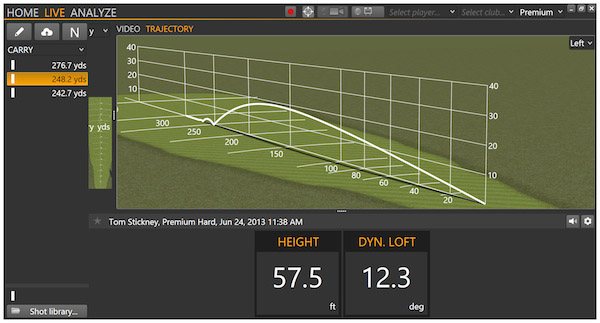
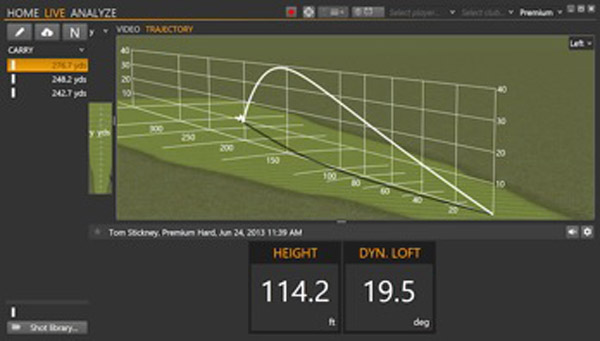










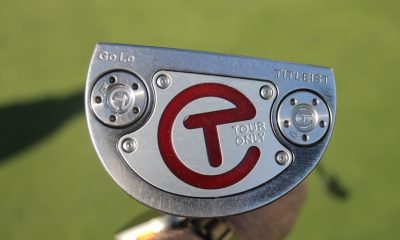

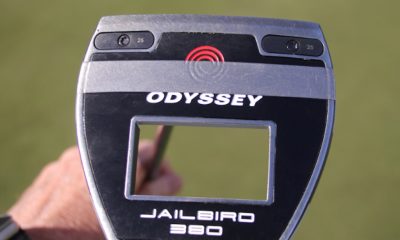

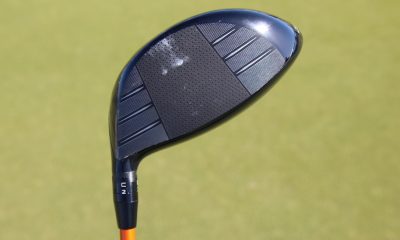



Jesse
Jul 8, 2013 at 10:47 pm
I remember being at a Ping fitting seminar about 8 years ago and they said the exact opposite. That if you tee it lower it will actually go higher as the ball will spin more based of a flatter or more downward strike in turn making the ball fly higher due to the spin? However numbers dont lie but it did seem to work that way for me, but i could also be altering my swing as well.
Jack
Jul 22, 2013 at 11:53 pm
I’d say it’s hard to hit it higher when you tee it low, since it’s harder to hit up on the ball. I think that’s the basis of this article. The tee height affects your angle of attack on the ball. You could be hitting down so much that you are imparting excessive spin causing the ball to rise up quick and balloon, but it’d be interesting if you weren’t also doing that when you teed it higher too.
Will o'the Glen
Jul 8, 2013 at 1:42 pm
“Please remember we are only going to alter the tee height in order to change trajectory — everything else will remain constant.”
I’m having a problem with the statement above, which is quoted verbatim from the article.
Since you always want to be hitting the ball with the center of the clubface, the ball’s position relative to the center of the arc of the swing has to change depending upon how high the ball is teed up. It’s that change in the point in the arc of the swing at which the clubface contacts the ball that results in the difference in ball flight.
Failing to change the position of the teed-up ball relative to the center of the arc of the swing when the teed-up height of the ball is changed could result in a variety of different types of mishits. For example, teeing up higher, as in Case 3, without moving the ball forward in the stance is likely to result in a pop-up.
The whole point of changing the height at which the ball is teed up is to allow the clubface to contact the ball at a different point in the arc of the swing – but the ball’s position relative to the player’s stance, and thus relative to the center of the arc of the swing, has to change to accommodate the teed-up height of the ball.
tom stickney
Jul 8, 2013 at 6:33 pm
The left arm determines the low point of the swing arc (see the golfing machine) and if you keep the ball there and alter the tee height you will see different trajectories. Remember there are many ways to accomplish this objective; this is just one very simple way for the average player to have fun with. Enjoy